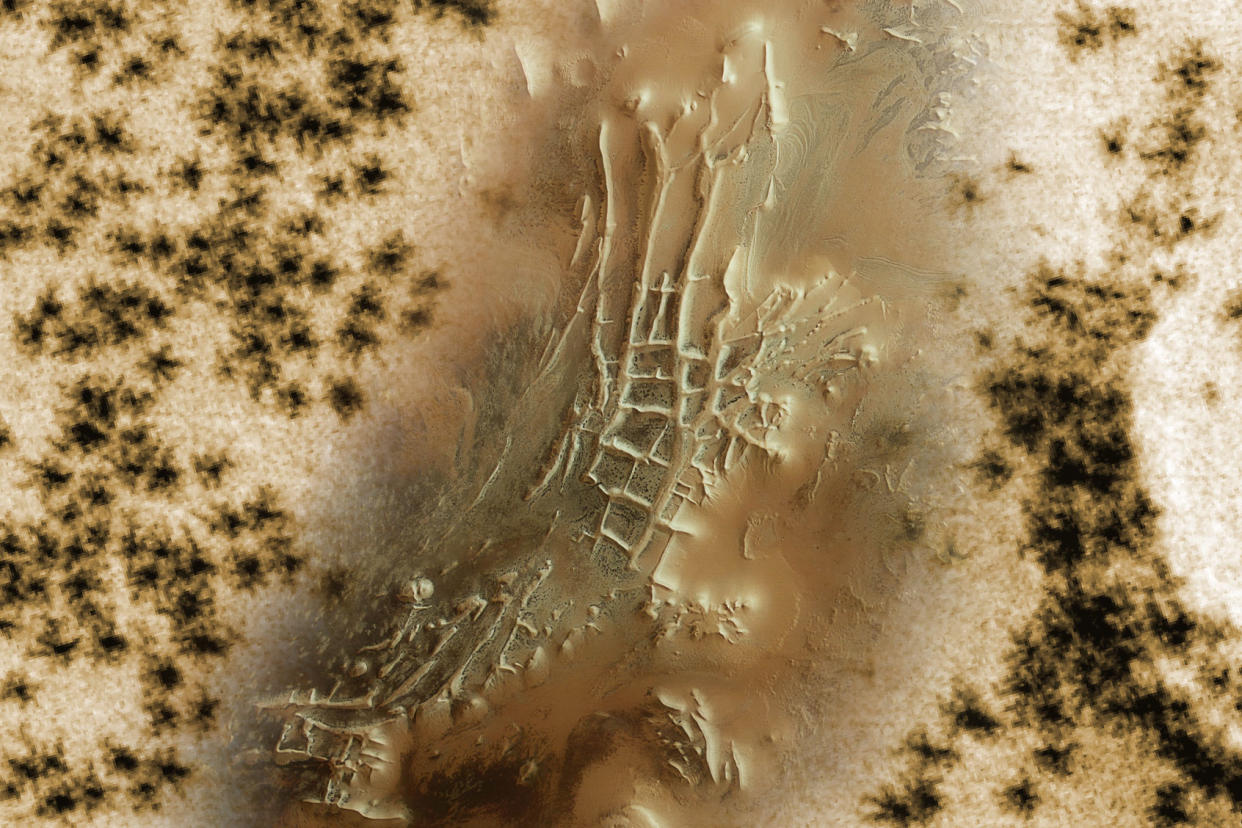Mars probe spots "spider" shapes in Martian Inca City

The European Space Agency reported a surprising finding in a region of Mars known as Inca City, in which dark shapes resembling spiders were discovered by the agency's Mars Express orbiting satellite. The strange arachnid shapes are actually geologic features formed by channels of carbon dioxide gas that originate as the weather warms in Mars' Southern Hemisphere for that planet's spring. This causes them to create black branches measuring from 0.03 to 0.6 miles across (45 meters to 1 kilometer) and dot an area near Mars' South Pole known as either Inca City or Angustus Labyrinthus. Layers upon layers of carbon dioxide ice melt in the process, with the lowest layers turning to gas (or sublimating), picking up dark dust and then exploding out of the overlying layers.
"This new view of Inca City and its hidden arachnid residents was captured by Mars Express’s High Resolution Stereo Camera," the ESA reported. Their spacecraft grabbed images of "everything from wind-sculpted ridges and grooves to sinkholes on the flanks of colossal volcanoes to impact craters, tectonic faults, river channels and ancient lava pools."
While fans of aliens and bugs (and David Bowie) are likely disappointed at the lack of literal Martian spiders, the presence of carbon dioxide suggests lifeforms may still indeed exist on the Red Planet. Carbon is regarded as an essential element in creating life because it is abundant in nature and polymerizes (forms large, complex molecules) easily with other ubiquitous elements like hydrogen, oxygen and nitrogen. Last year a Mars rover discovered organic compounds, or substances that have been polymerized with carbon.

